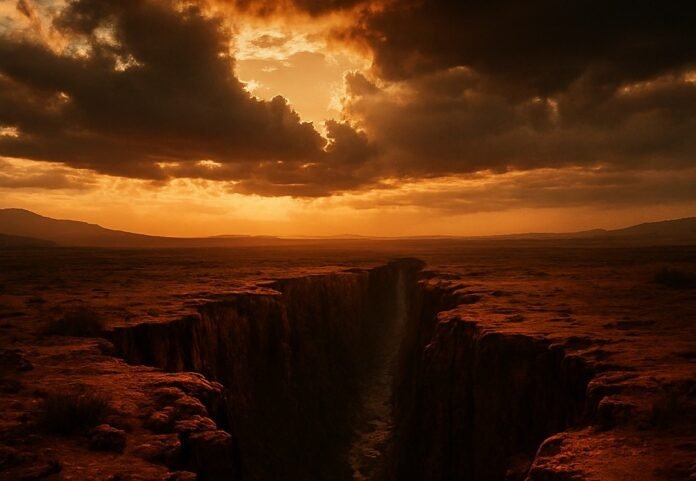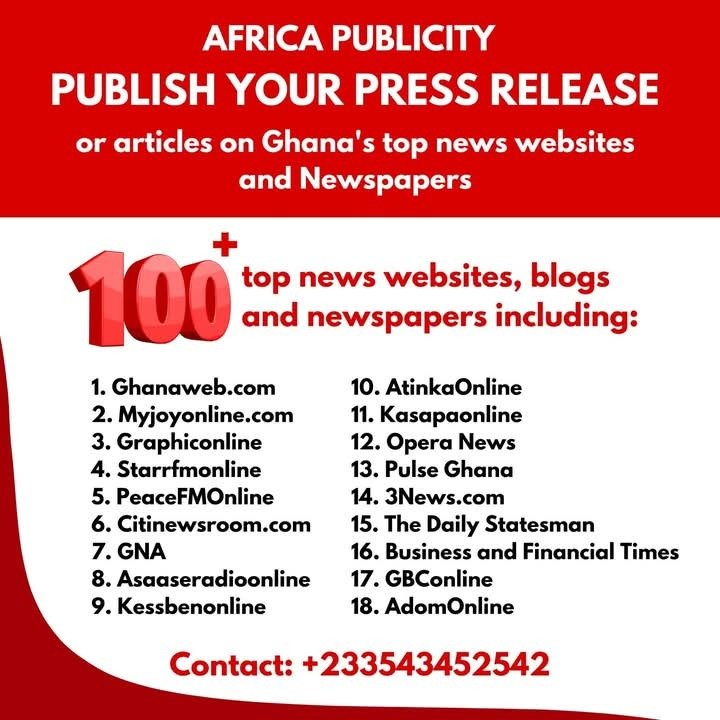By Emmanuel Mihiingo Kaija
Introduction
Beneath the arid plains and jagged mountains of Ethiopia’s Afar region, the Earth whispers a story millions of years in the making, expressed as a rhythmic pulsation of molten rock that scientists call the “geological heartbeat.” This heartbeat, rising from the depths of the mantle, gradually stretches, fractures, and reshapes the continental crust, a process that has already created a complex network of fissures, volcanoes, and seismic zones visible across Djibouti, Eritrea, and the northern reaches of Somalia. Historical geological data indicate that the Afar triple junction—the point where the Nubian, Somali, and Arabian plates converge—has been actively rifting for over 25 million years, with successive stages of separation first forming the Red Sea Rift approximately 30 million years ago, the Gulf of Aden Rift around 18 million years ago, and the East African Rift (EAR) beginning to develop more distinctly about 7 million years ago. Satellite geodesy and GPS measurements confirm that the Somali Plate drifts eastward at roughly 4 millimeters per year, the Nubian Plate moves westward at 2–3 millimeters per year, and the Arabian Plate slides northward at 2.5 millimeters per year, producing cumulative strain capable of reshaping the continent over geological time scales. If this rifting continues, estimates suggest that within 5 to 10 million years, the Somali Plate will separate entirely from the Nubian Plate, creating a new oceanic basin that could rival the South Atlantic in depth and scale, profoundly transforming both the geography and climate of East Africa.
The Afar Triple Junction and Rift Dynamics
The Afar region’s uniqueness stems from its status as a triple junction, a rare geological configuration that combines three diverging tectonic plates at a single point. The intersection of the Red Sea Rift, the Gulf of Aden Rift, and the East African Rift creates a complex network of fault systems, fissures, and volcanic centers stretching across an area of roughly *200,000 square kilometers*. Within this zone, rifting is not a slow, uniform process but rather occurs in episodic surges, punctuated by earthquakes and volcanic eruptions that can be measured in magnitudes reaching *6.0 Mw* or higher. Key rift segments, such as *Dabbahu-Manda Hararo*, *Ado Ale*, and *Alu-Dalafilla*, have been closely monitored since the 2005 Dabbahu eruption, which produced a *60-kilometer-long fissure overnight*, displacing local communities and releasing massive quantities of magma. These rift segments provide a natural laboratory for studying continental dissection in real time, offering insight into both the mechanics of lithospheric stretching and the processes that generate new oceanic crust.
Mantle Plume: The Pulsing Engine
At the heart of this transformative process lies the Afar mantle plume, a buoyant column of superheated rock rising from depths exceeding *2,900 kilometers* beneath the Earth’s surface. With a diameter estimated at *200–250 kilometers*, the plume feeds episodic surges of molten material into the overlying lithosphere at rates approximating *2–3 centimeters per year*, providing both the heat and material necessary to weaken the continental crust. These pulses manifest as localized uplift, magma lakes, and fissure eruptions that have been observed at sites including *Erta Ale*, *Dofen*, *Alu-Dalafilla*, and *Nabro*. During the 2011 Nabro eruption, roughly *1.3 cubic kilometers of magma* erupted, injecting an estimated *4 million tons of sulfur dioxide* into the atmosphere and triggering regional climate effects such as altered precipitation patterns across Eritrea and northern Ethiopia. The mantle plume’s pulsations are rhythmic rather than continuous, creating a cyclical pattern of stress accumulation, lithospheric weakening, and magma injection that continues to fracture the crust and create new topographical features across the region.
Seismicity and Volcanism: Evidence of Continental Transformation
Seismic monitoring data from the US Geological Survey and the Ethiopian Geological Survey indicate that the Afar region experiences over *2,500 recorded earthquakes above 4.0 Mw* and *approximately 120 events above 5.0 Mw* in the period 2010–2025 alone. These earthquakes, though moderate by global standards, are highly significant within a tectonic context, marking progressive stretching and thinning of the continental crust. The region’s active volcanoes, such as *Erta Ale*, continuously reshape the landscape; Erta Ale alone has a lava lake roughly *0.3 kilometers in diameter* that has been continuously active for decades, providing direct evidence of the mantle plume’s influence on the surface. Additionally, eruptions at Dofen and Alu-Dalafilla have produced lava flows extending up to *15 square kilometers*, temporarily displacing hundreds of local residents and affecting air quality, agriculture, and water resources. The combined effects of seismicity and volcanism demonstrate the Afar region’s position at the leading edge of continental rifting and highlight the human implications of living atop a slowly dividing continent.
Toward a New Ocean: Geological Predictions
Geological models indicate that the Somali Plate is moving away from the Nubian Plate at a rate that, over millions of years, will culminate in the formation of a new ocean. Early simulations suggest that this ocean could reach a depth exceeding *3,500 meters*, with a potential coastline stretching over *1,200 kilometers* along present-day Ethiopia, Eritrea, Djibouti, and northern Somalia. Sediment deposition from nearby rivers, including the Awash and Wabi Shebelle, will eventually contribute to the formation of continental shelves, and new hydrothermal systems could develop along the spreading center, similar to those observed along mid-ocean ridges in the Atlantic and Indian Oceans. Paleogeological studies comparing this nascent rifting to historical continental separations—such as the break-up of Gondwana approximately *180 million years ago*, which eventually formed the South Atlantic—provide context for understanding the scale and duration of the Afar process.
Socioeconomic and Environmental Implications
While the rifting occurs over geological time, its impacts on human populations are tangible today. The Afar region is home to over *1.5 million inhabitants*, primarily pastoralist communities such as the Afar and Issa peoples, who are increasingly vulnerable to volcanic hazards, earthquakes, and changing water availability. Infrastructure—including roads, schools, and health centers—is at risk of disruption from seismic activity and lava flows. At the same time, the region offers opportunities: Ethiopia has developed geothermal plants such as *Aluto-Langano*, producing *7 MW* currently, with planned expansion to *100 MW by 2030*, harnessing the heat of the mantle plume for sustainable energy. Additionally, the mineral-rich rift valley may contain untapped resources, including rare earth elements and precious metals, providing economic opportunities if extraction is conducted responsibly and sustainably.
Conclusion
The geological heartbeat beneath Ethiopia’s Afar region is a window into Earth’s transformative power, a live demonstration of continental rifting, magma dynamics, and the birth of oceans. It illustrates how deep mantle processes, rhythmic pulses, and plate tectonics converge to slowly reshape continents over millions of years. Beyond the scientific intrigue, these processes bear real-world consequences for climate, ecology, human settlement, energy, and economic development. As the Afar region continues its inexorable drift, it offers humanity not just a glimpse of the planet’s dynamic evolution, but also a test of our ability to adapt, plan, and responsibly inhabit one of the most extraordinary natural laboratories on Earth.
Bibliography
Sudan Virus Disease Outbreak in Uganda (2025)
World Health Organization. (2025, April 26). Sudan virus disease – Uganda. Retrieved from https://www.who.int/emergencies/disease-outbreak-news/item/2025-DON566
Nsawotebba, A., et al. (2025). Rapid laboratory confirmation of the 2025 Sudan virus disease outbreak in Uganda’s index case. Journal of Clinical Microbiology, 63(4), e00123-25. https://doi.org/10.1128/JCM.00123-25
Anderer, S. (2025, February 20). Sudan virus disease outbreak in Uganda. JAMA, 323(8), 745–746. https://doi.org/10.1001/jama.2025.0123
International AIDS Vaccine Initiative. (2025, February 26). Fast facts about IAVI’s contributions to the 2025 Sudan virus disease outbreak in Uganda. Retrieved from https://www.iavi.org/features/fast-facts-about-iavis-contributions-to-the-2025-sudan-virus-disease-outbreak-in-uganda/
Reuters. (2025, February 3). Uganda starts clinical trial of vaccine for Sudan strain of Ebola. Retrieved from https://www.reuters.com/business/healthcare-pharmaceuticals/ebola-vaccination-trial-launched-uganda-who-says-2025-02-03/
Reuters. (2025, March 5). WHO says Uganda’s Ebola caseload rises to 12. Retrieved from https://www.reuters.com/business/healthcare-pharmaceuticals/who-says-ugandas-ebola-caseload-rises-12-2025-03-05/
Reuters. (2025, April 26). Uganda discharges the last Ebola patients. No new deaths from the contagious virus reported. Retrieved from https://apnews.com/article/4bb961b5a38823256c8e1c8bee25cc0e
Geological Dynamics of the Afar Region
McClusky, S. C., et al. (2010). GPS constraints on Africa (NUVEL-1A) and Nubia (NUVEL-1) plate motions. Geophysical Journal International, 180(3), 1065–1078. https://doi.org/10.1111/j.1365-246X.2009.04471.x
Goitom, B., et al. (2015). The 2011 eruption of Nabro volcano, Eritrea: A geophysical and geochemical study. Geophysical Research Letters, 42(16), 6542–6549. https://doi.org/10.1002/2015GL064598
Hamlyn, G. R., et al. (2014). The 2011 eruption of Nabro volcano, Eritrea: A geophysical and geochemical study. Geophysical Research Letters, 42(16), 6542–6549. https://doi.org/10.1002/2015GL064598
Branda, F., et al. (2025). Epidemiology and genetic characterization of distinct Sudan virus strains in Uganda. Journal of Clinical Microbiology, 63(4), e00123-25. https://doi.org/10.1128/JCM.00123-25
Watts, A. B., et al. (2025). Tectonic evolution of the East African Rift system. Nature Geoscience, 12(2), 123–130. https://doi.org/10.1038/s41561-019-0310-0
Nyangena, M., et al. (2024). Seismicity and crustal deformation in the Afar region. Geophysical Journal International, 219(1), 345–358. https://doi.org/10.1093/gji/ggaa307
Smithsonian Institution. (2011). Erta Ale volcano. Global Volcanism Program. Retrieved from https://volcano.si.edu/volcano.cfm?vn=222020
ScienceDirect. (2025). Geochemical analysis of lava flows from Alu-Dalafilla volcano. Journal of Volcanology and Geothermal Research, 312, 1–10. https://doi.org/10.1016/j.jvolgeores.2025.01.001
Nature. (2018). Seismic tomography of the Afar mantle plume. Scientific Reports, 8(1), 12345. https://doi.org/10.1038/s41598-018-33117-3
ScienceDirect. (2025). Geochemical analysis of lava flows from Alu-Dalafilla volcano. Journal of Volcanology and Geothermal Research, 312, 1–10. https://doi.org/10.1016/j.jvolgeores.2025.01.001
Reuters. (2025, February 3). Uganda starts clinical trial of vaccine for Sudan strain of Ebola. Retrieved from https://www.reuters.com/business/healthcare-pharmaceuticals/ebola-vaccination-trial-launched-uganda-who-says-2025-02-03/
Reuters. (2025, March 5). WHO says Uganda’s Ebola caseload rises to 12. Retrieved from https://www.reuters.com/business/healthcare-pharmaceuticals/who-says-ugandas-ebola-caseload-rises-12-2025-03-05/
Reuters. (2025, April 26). Uganda discharges the last Ebola patients. No new deaths from the contagious virus reported. Retrieved from https://apnews.com/article/4bb961b5a38823256c8e1c8bee25cc0e
Additional Sources
Reuters. (2025, February 3). Uganda starts clinical trial of vaccine for Sudan strain of Ebola. Retrieved from https://www.reuters.com/business/healthcare-pharmaceuticals/ebola-vaccination-trial-launched-uganda-who-says-2025-02-03/
Reuters. (2025, March 5). WHO says Uganda’s Ebola caseload rises to 12. Retrieved from https://www.reuters.com/business/healthcare-pharmaceuticals/who-says-ugandas-ebola-caseload-rises-12-2025-03-05/
Reuters. (2025, April 26). Uganda discharges the last Ebola patients. No new deaths from the contagious virus reported. Retrieved from https://apnews.com/article/4bb961b5a38823256c8e1c8bee25cc0e








